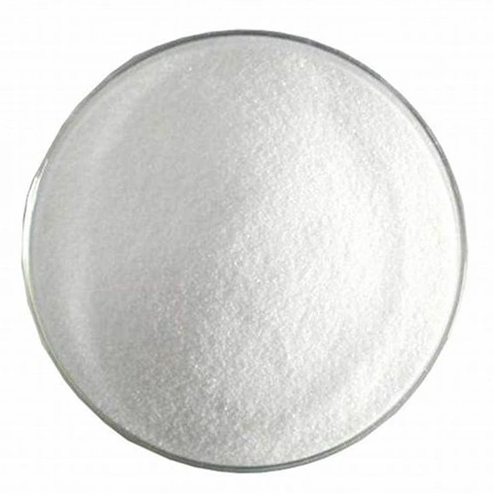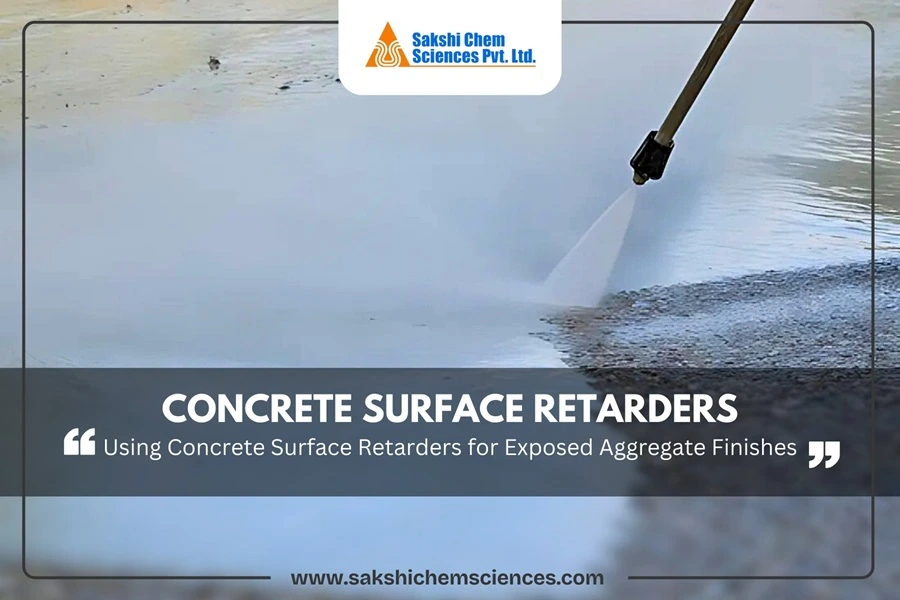In the modern world, the construction industry is changing its dynamics with advanced construction chemicals like concrete admixtures. One of the examples of it is concrete retarders which are useful in construction projects to delay the hardening of concrete. In terms of aggregates, there are several methods of exposing them in concrete slabs and floors to make visually appealing or decorative surfaces. However, the simplest and most durable method is to apply concrete surface retarders.
Table of Contents
Applying concrete surface retarders is the safest method which requires less labour cost. It is a very helpful method because it delivers highly consistent results, ensuring the aggregates are evenly exposed without fracturing, dislodging, or losing their color.
Surface retarders are widely known as they offer better control over the depth of exposure, resulting in achieving the desired surface finish. If you’re new to using a concrete surface retarder, this blog will help you understand the fundamental tips to help you get started.
Defining Concrete Surface Retarder
To give a clear idea, surface retarders are also called deactivators. This means these are applied to the fresh concrete surfaces to delay the setting time of the mortar or concrete. These are water-soluble chemical additives that easily get dissolved in water. The best quality is that surface retarders don’t affect the strength and durability of the concrete.
In the case of its mechanism, it works by eliminating the hydration process down to a controlled depth, confirming the underlying concrete cures correctly while making it easy to remove the surface paste afterward.
The Timing For Applying Surface Retarder
Surface retarders should be applied to the freshly placed concrete surfaces. So, when the concrete is placed in the desired space, compacted, and screeded, then before it starts to set the surface retarder should be applied. Always make sure to not seal the concrete first or use any curing compounds which could result in preventing the retarder from achieving the best results.
It is recommended to apply the concrete surface retarders on the surface using a low-pressure sprayer or roller. In many cases, concrete surface retarders create a thin protective layer on the surface, which doubles as a temporary curing agent. This layer helps shield the concrete from environmental factors, ensuring better durability and performance. For instance, if there is extreme winds or rain is anticipated, the concrete surface should be protected with plastic sheeting.
A pro tip to ensure the surface retarders are evenly sprayed is visually monitoring by using a pigmented surface retarder. This type of retarder consists of tracer dye which allows you to see the surface covered and which is not. And don’t worry about the dye, it decomposes with time after drying of surface retarders.
The Right Time Wash Off The Concrete Surface
This decision to wash off the concrete surface depends on some factors like concrete mix design and environmental situations. So, with each case, it’s a different wash-off time. However, the general window to wash it off is around 12 to 24 Hrs after its proper application.
Before application, test a small area to ensure the retarded mortar depth meets the desired level. In case you observe that the depth exceeds the expected level or aggregates start to loosen, then you should allow more time before exposing the aggregates. When the concrete is completely set, you can remove the surface paste using a garden hose, pressure washer, or a stiff broom.
When you decide to apply the surface retarder, it is your responsibility to ensure that it should be removed within the next 24 Hrs. In case the surface is hardened due to long duration, then aggregate exposure will become challenging and may necessitate sandblasting.
Factors That Influence the Depth of Exposure
When you apply a surface retarder to concrete, the depth of exposure largely depends on how porous the concrete surface is. The more porous or open the concrete the deeper the exposure to the surface retarder. Furthermore, the depth can also be influenced by the duration the retarder stays on the concrete surface, finishing methods over concrete, the water pressure, and the scrubbing force applied during the removal of the surface retarder.
Again a pro tip, after application of the surface retarder, avoid doing hard troweling of the concrete surface which will significantly decrease the efficacy of the surface retarder. To get the best exposure of surface retarders, use a wood float or broom finish which will permit the retarder to go more deeply into the concrete.
Precautions to Take When Using Surface Retarder
Since concrete surface retarders are water-soluble, they are safe to use outdoors and in areas with limited ventilation. Most branded surface retarders are chemically formulated which are biodegradable and don’t harm the environment i.e., environmentally friendly. These chemicals are free of volatile organic compounds (VOCs) and have a mild odor. Spills or overspray can be easily washed away with water or absorbed using a material designed for that purpose.
Applications of Surface Retarder
Concrete surface retarders can be applied on various horizontal concrete surfaces like floor slabs, precast panels, and poured-in-place slabs to expose the aggregate. Surface retarders are widely used not only for exposing aggregates but also for creating a textured bonding surface ideal for applying concrete toppings.
Another use is to assist in polishing freshly placed concrete. A surface retarder softens the surface cement paste greatly, which helps in reducing both polishing time and the need for extensive grinding.
Always avoid applying concrete surface retarders on vertical surfaces or those treated with shake-on color hardeners. In short, the dense surface built by color hardeners stops the surface retarders’ penetration.
It is worth noting that surface retarders work best on freshly placed concrete only. Abrasive blasting techniques can still be used to expose the aggregate on existing concrete.
Different Effects You Can Achieve with Surface Retarder
There are various surface retarders available in the market depending on their grades to produce pre-set exposure depths. These can vary from a subtle sandblast finish to a 1-inch depth for exposing larger decorative stones.
Surface retarders can also be applied to integrally colored concrete. Then it produces a visually appealing and eye-catching contrast with the exposed aggregate. Beyond aggregate, surface retarders can be used to reveal other embedments like crushed shells or glass.
Related Post: A Guide to Concrete Retarders: Types, Benefits, Uses, and Drawbacks
Sodium Gluconate by Sakshi Chem Sciences
Are you looking for a reliable concrete surface retarder? Our Sodium Gluconate also is the perfect solution. This dry mix raw material is produced under strictly controlled conditions meeting the industry standards. It’s a high-quality white crystalline powder that is water-soluble.

Sodium Gluconate by Sakshi Chem Sciences is not only non-toxic, non-flammable, and non-corrosive, but it’s also an eco-friendly, biodegradable construction chemical. Isn’t it amazing? When added to concrete, it effectively slows down the setting time by inhibiting hydration, giving you more control over your concrete mix.
Conclusion
Concrete admixtures always proved to be a better additive to greatly help in the construction process. To sum up, concrete surface retarders are essential construction chemicals to delay the setting time of concrete. Experts suggest purchasing these essential construction chemicals from reputable manufacturers such as Sakshi Chem Sciences Pvt. Ltd.
We are a widely recognized and renowned construction chemicals manufacturer in India offering top-quality construction chemicals with 20+ years of industry experience. Sakshi’s trained professionals provide customized quotations and assistance on our quality products. So, get in touch with us to buy the best-in-class construction chemicals for your construction project.


